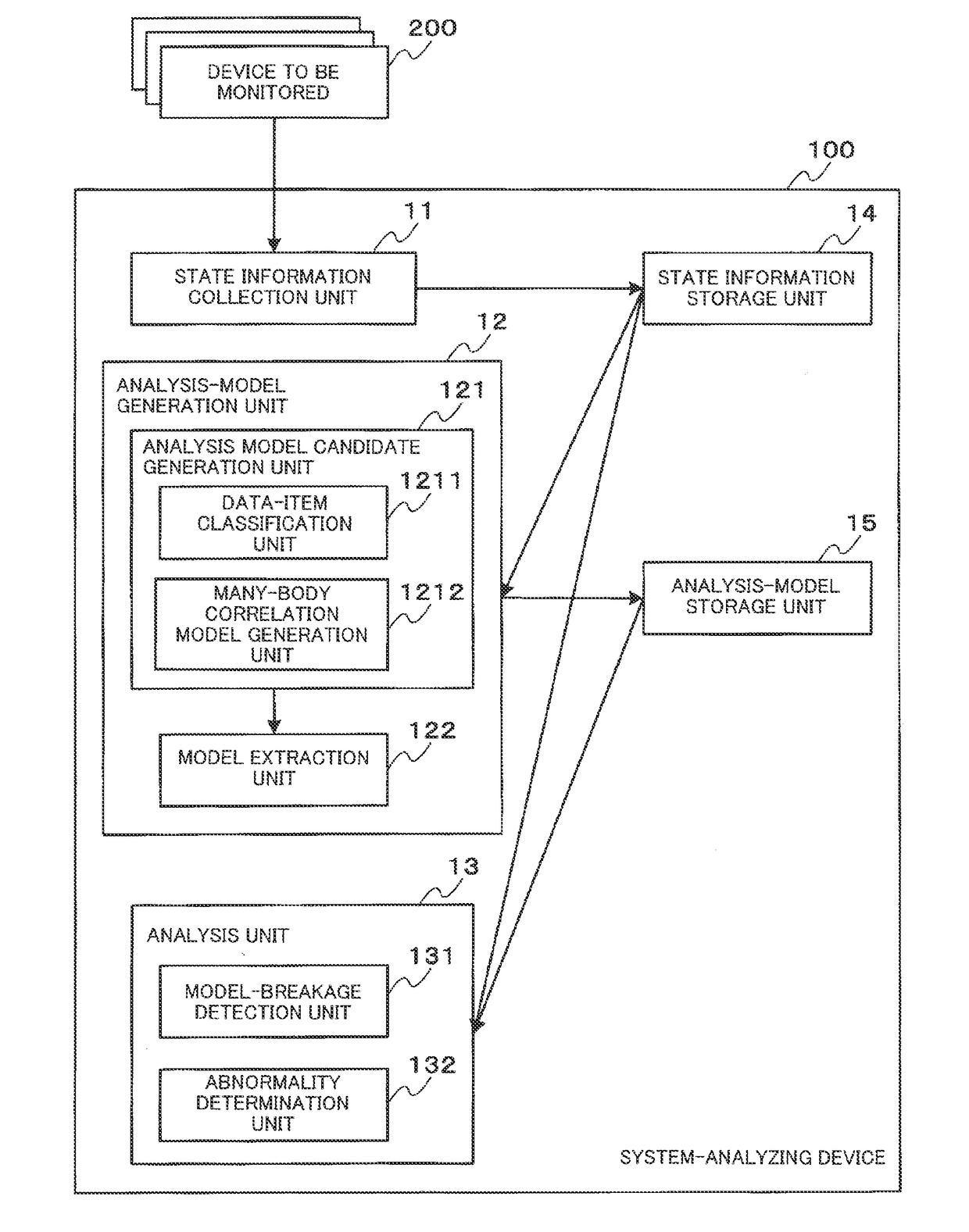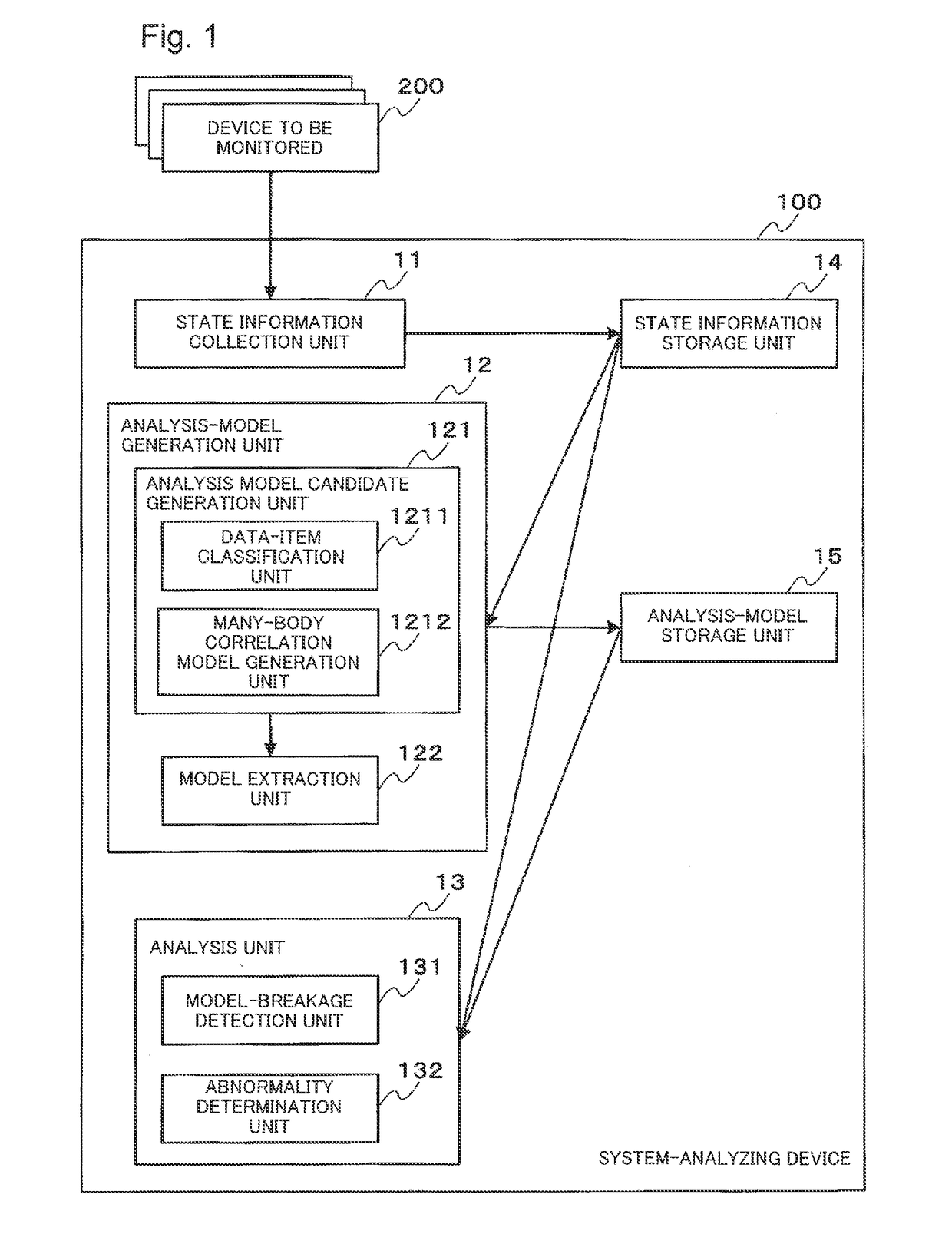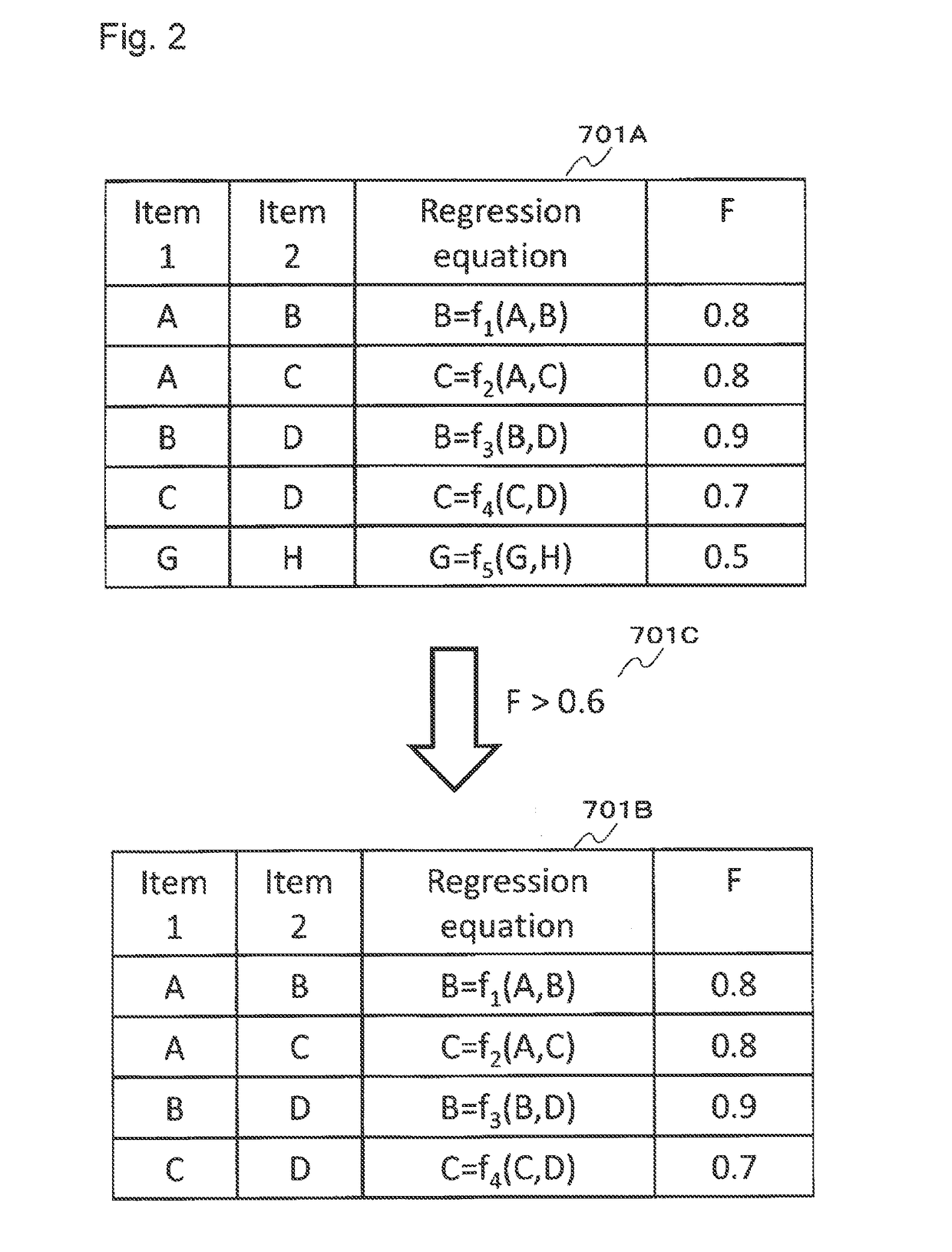System-analyzing device, analysis-model generation method, system analysis method, and system-analyzing program
a system analysis and program technology, applied in the field of system analysis devices, analysismodel generation methods, system analysis methods, and system analysis programs, can solve problems such as system and peripheral damage, system abnormalities, and inability to detect abnormalities, and achieve high accuracy
- Summary
- Abstract
- Description
- Claims
- Application Information
AI Technical Summary
Benefits of technology
Problems solved by technology
Method used
Image
Examples
exemplary embodiment 1
[0050]Exemplary embodiments of the present invention will be described below with reference to the drawings. Each exemplary embodiment will be described below by taking, as an example, the case of applying a system-analyzing device of the present invention to detection of an abnormality of a power plant system.
[0051]FIG. 1 is a block diagram illustrating a configuration example of a system-analyzing device 100 of a first exemplary embodiment. As illustrated in FIG. 1, the system-analyzing device 100 of this exemplary embodiment is connected to a system to be monitored, including at least one device 200 to be monitored. The device 200 to be monitored is an apparatus or a subsystem as a component included in the power plant system, and is, for example, a turbine, a feed water heater, or a condenser. The device 200 to be monitored also includes an element, such as piping or a signal line, which connects devices. In this exemplary embodiment, it is assumed that the system to be monitore...
exemplary embodiment 2
[0160]Next, a second exemplary embodiment of the present invention will be described. This exemplary embodiment is the same as the first exemplary embodiment except a method for choosing a representative data item. Therefore, the same portions as those in the first exemplary embodiment are denoted by the same reference signs, and the descriptions thereof are omitted.
[0161]In this exemplary embodiment, a data item of which the value earliest changes on a time-series basis in each data item group, i.e., a data item in which a change point appears earliest is chosen as a representative data item. When a plurality of representative data items are chosen, the representative data items may be chosen in descending order of the earliness of the appearance of the change point of information.
[0162]First, a many-body correlation model generation unit 1212 of this exemplary embodiment randomly selects one of data items contained in a data item group classified by a data-item classification unit...
exemplary embodiment 3
[0167]Next, a third exemplary embodiment of the present invention will be described. This exemplary embodiment is different from each of the exemplary embodiments described above in that not only a many-body correlation model but also a cross-correlation model is used as a correlation model for an analysis model. The following description is presented by taking, as an example, a case in which the function of using the cross-correlation model as the analysis model is added to the configuration of the first exemplary embodiment. However, the function may be added to the second exemplary embodiment. In the following description, the same portions as those in the first exemplary embodiment are denoted by the same reference signs, and the descriptions thereof are omitted.
[0168]FIG. 11 is a block diagram illustrating a configuration example of a system-analyzing device 300 of this exemplary embodiment. The system-analyzing device 300 illustrated in FIG. 11 is different in comparison with ...
PUM
 Login to View More
Login to View More Abstract
Description
Claims
Application Information
 Login to View More
Login to View More - R&D
- Intellectual Property
- Life Sciences
- Materials
- Tech Scout
- Unparalleled Data Quality
- Higher Quality Content
- 60% Fewer Hallucinations
Browse by: Latest US Patents, China's latest patents, Technical Efficacy Thesaurus, Application Domain, Technology Topic, Popular Technical Reports.
© 2025 PatSnap. All rights reserved.Legal|Privacy policy|Modern Slavery Act Transparency Statement|Sitemap|About US| Contact US: help@patsnap.com



